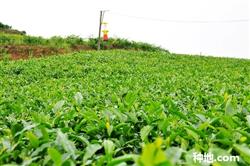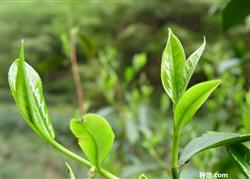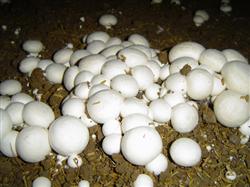How to cultivate pollution-free tea?

How to cultivate pollution-free tea? Please guide the growing demand for diversification, harmlessness and health care of tea. Pollution-free cultivation of tea can effectively control pesticide residues in tea, which can not only ensure the health of tea exports and consumers, but also improve the economic benefits of producers. Now the main points of pollution-free tea cultivation are introduced as follows: first, variety selection. Select varieties with strong adaptability and disease resistance. Second, strictly select the place. Areas where soil, water sources and atmosphere are not contaminated by industrial wastes and radioactive materials are selected as production bases. Third, soil management. The main results are as follows: 1. In the 1-3-year-old tea garden, legume green manure or forage crops are planted between rows. 2. Soil deep ploughing, weeding and covering or shallow application of organic matter such as straw, forage and barnyard manure in the soil to improve soil physical and chemical properties and soil environment. 3. For tea gardens with rich and soft soil, no weeds and high canopy coverage, reduced tillage or no-tillage should be implemented. Promote the use of organisms (such as earthworms) to improve soil structure and soil fertility. Fourth, fertilization technology. 1. Topdressing: after high temperature composting and harmless treatment, human and animal manure are trenched and applied to the tea garden. 2. Base fertilizer: fully mature organic fertilizer produced by organic agricultural system for 1-6 months, including pollution-free cake manure, green manure, crop residue, peat, artemisia stalk, seaweed, as well as composting food and forestry by-products. Base fertilizer should be trenched and applied deeply. 3. Spraying organic fertilizer on the leaf surface, such as spraying "Tian Da 2116" 700-1000 times liquid once before and after leaf bud germination and during leaf expansion of tender shoots. Fifth, pest prevention and control. 1. Agricultural prevention and control. Such as timely picking and pruning tea trees, and taking disease and insect branches out of the tea garden; timely weeding and farming. 2. Make use of natural enemies and biological pesticides. 3. Stone-sulfur mixture should be used to close the garden at the end of the tea season in order to reduce the occurrence of diseases and insect pests in the following year, but the stone-sulfur mixture should not be used in the tea harvest season, and its usage should not make the copper content of tea exceed the standard. 6. Water management. 1. Give priority to water conservation, and generally require the relative water content of the soil in the tillage layer to be 75%, 50%, 90%, to ensure the normal growth and development of tea trees. Tea garden soil is covered with grass, water storage ditches and ponds are built at roadside corners, tree planting is recommended, vegetation coverage is increased, etc., in order to reduce water evaporation and conserve water. 2. When the drought is serious and the relative water content of the plough layer soil is less than 70%, the water should be diverted and sprinkled in time, and its water quality shall meet the national surface water environmental quality standards. Click to get more tea planting techniques click to get more flower planting techniques click to return to the farming network
- Prev

How to apply foliar fertilizer to tea leaves in summer?
How to apply foliar fertilizer to tea leaves in summer? Please introduce the high temperature in summer, often drought, tea roots by water conditions, absorption capacity is weak, root fertilization effect is poor. If foliar fertilizer is sprayed during the growth of summer tea, it can not only improve the yield of tea, but also enhance the tenderness of new buds, which is beneficial to...
- Next

How can Agaricus bisporus be planted with high yield?
How can Agaricus bisporus be planted with high yield? Please introduce in detail that Agaricus bisporus is the edible fungus with the largest cultivated area and yield in the world because of its fresh and tender meat, delicious taste and rich nutrition. The main cultivation techniques are introduced as follows: 1 the main raw materials for the cultivation of Agaricus bisporus are various agricultural products (8.
Related
- Fuxing push coffee new agricultural production and marketing class: lack of small-scale processing plants
- Jujube rice field leisure farm deep ploughing Yilan for five years to create a space for organic food and play
- Nongyu Farm-A trial of organic papaya for brave women with advanced technology
- Four points for attention in the prevention and control of diseases and insect pests of edible fungi
- How to add nutrient solution to Edible Fungi
- Is there any good way to control edible fungus mites?
- Open Inoculation Technology of Edible Fungi
- Is there any clever way to use fertilizer for edible fungus in winter?
- What agents are used to kill the pathogens of edible fungi in the mushroom shed?
- Rapid drying of Edible Fungi

